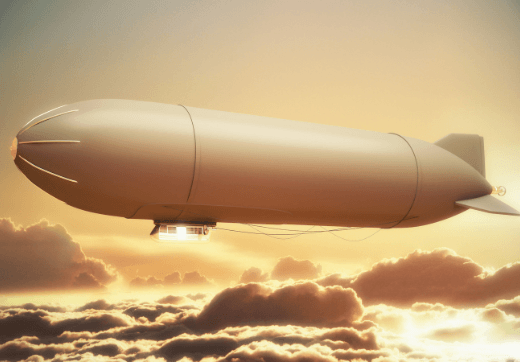Jet engines, vaccination, and the rolling suitcase are all products that make our lives more comfortable, convenient and connected. But how were they created? Through innovation, Still leaves this leave us with other questions of who these innovators are and what innovation is, and how it will impact our life.
What is innovation?
Most people don’t know what innovation means. But innovation is the driving force behind the success of civilizations and technological advancement. When you look closely into human history, you begin to understand the conditions that led to creativity that made new things possible.

The industrial revolution was a giant leap in productivity, which was the start of the modern era. It began when humans harnessed the power of steam to automate work. To do this, a new machine called the atmospheric steam engine was used.
So who is the inventor of this astounding achievement? A man named Denis Papin, or should we praise a fellow called Thomas Savery, or maybe we should thank Thomas Newcomen? Well, the truth is that all of these three men deserve some credit, but none of them can claim it all for themself.
All Papin, Savery, and Newcomen produced 1700 of their own working models of the atmospheric engine. And still, to this day, it is unclear who was truly the first and how much each invention was influenced by the others.
Innovation is often associated with a single creator. But it is an oversimplified of how innovation operates. Even the most creative people don’t work in a bubble. They are always influenced by the ideas, technologies, tools, and social structures surrounding them. It often means multiple forces contribute to innovation, even if one person takes credit.
The atmospheric steam engine is a relatively simple device that heats and cools water in a metal cylinder. The changing pressure caused by the steam creates movement that can be used for work, like plumbing water out of mines.
So, could Savery, Papin, and Newcomen invent it completely on their own? Not really; the basic ideas of the device were already topics of discussion in scientific circles at the time. Papin and Savery were both deducted men that refined their thinking by exchanging letters and papers with other inventors.
Also, Newcoment, who built the most successful version of the engine, relied on advances in blacksmithing technology to complete his machine. Each version of the steam engine was also a product of their background and influences.
This principle can apply to all innovations. Most people know who to credit for inventing the light bulb in 1879. It was Thomas Edison, but the truth is more than 20 other creators patented similar contributions in earlier decades. All of these thinkers were responding to ideas and technologies at their time. While some of these attempts were better than others, none of these innovations happened in complete isolation.
It makes innovations a collective, complex and messy process
How has medical innovation changed?
Medicine evolved with its own innovative procedures like the following method:
- Step one: Find someone recovering from smallpox. Then carefully scrape some pus off one of the open lesions caused by the disease.
- Step two: Use a knife or needle cut an open wound into your skin that is not too deep but enough to draw blood.
- Step three: Rube the infected pus into your wound.

It is a technique called engraftment, which in most cases, makes you immune to smallpox. While it seems gross and dangerous now just think how it appeared in Europe in the 1700s. They didn’t have enough scientific understanding of why it works, but it somehow works. As centuries passed, the practice caught on. It saved countless lives and might lead to the discovery of modern-day vaccines.
An interesting fact about innovation is that the biggest revelations don’t always come from intentional discovery or sound scientific theories. Instead, they develop over time through random chances and trial and error as people look for practical solutions to their problems.
In medicine, this is a risky process, but it resulted in many life-saving practices.
1908 in Jersey City, the rapid industrial development tainted the water of the city with unsanitary runoff. It resulted in serious outbreaks of cholera and other diseases. To solve the problem, Dr. John Leal added chloride of lime to disinfect the water.
At the time, adding chemicals to drinking water was considered dangerous, so local citizens were outraged. But Leal heard of rumors that in European cities, it worked, so he tried it anyway. Within months the experiment paid off, and the disease rates dropped. Soon communities all around the country were following Jersey City’s example.
Travel improvements
At the dawn of the nineteenth century, the horse was the king of transportation. But some inventors believed the machine, the steam-powered locomotive, could take its place. The problem was figuring out how to build one. So engineers tried a lot of different designs, and each new prototype got its one bold new name.
While not every device succeeded, some made impacting improvements in speed safety or reliability. By 1829 the Rocket, a locomotive built by Robert Stephenson, was cable of transporting 13 tons of cargo at 30 miles per hour. The world was on its way to a railway boom.
Throughout history, humans were always looking for faster and more reliable ways to travel. Still, no new mode of transportation emerged in a completely perfect form. As an example, these efficient machines that carry us around today result from countless individuals making small design improvements over time.

Only look at the evolution of today’s automobiles. Most rely on the internal combustion engine for power. It was a Franco-Swiss artillery officer called Isaac de Rivaz who built the machine’s earliest ancestor back in 1807. It ran on hydrogen and oxygen and was loud and prone to explosions.
In 1860 Jean Josepth Lenoir from Pennsylvania updated the design of petroleum. This was a better version, but the device was still very inefficient.
Nikolaus Otto, a grocery salesman in 1876, refined the machine by adding a four-step cycle of compression and ignition. It was the four-stroke engine that allowed smoother operations. This design was adopted by German inventor Karl Benz in 1894. He used the engine’s power to drive a three-wheeled machine called the Moterwargen.
The Moterwagen was a hit for the rich, but it remained a luxury. It took another inventor Herny Ford to bring the automobile to the masses. In 1909 his assembly line manufacturing process made the Model T car affordable for more people.
Soon cars were one of the most popular forms of transportation around. It took a decade of slow and steady improvement, but the engine had finally conquered the horse.
Not all innovations were solid things
The tasty potato is the basis for many popular snacks and dishes we eat today, but this wasn’t always the case. At least in Europe, it took some innovation.
First cultivated more than 8000 years ago in the Andes Mountains of South America, they didn’t see the old world until the mid-1500s. Still, for decades, Europeans were suspicious of potatoes, the church in England even banned them, and people in France believed they caused leprosy.
But people slowly learned to love this robust nutrient-rich crop. The idea of eating potatoes was first caught in Belgium. It then spread throughout the entire continent. By the 1800s, most European countries made the potato a new staple for their meals.
We think of innovation as a process of making new items like labor-saving machines or electronic gizmos. However, most of the influential innovations aren’t objects at all. Instead, they are ideas that open up new approaches to the world or solve problems.
One of these intangible innovations was the everyday use of the Arabic numeric system commonly known as numbers. Even the idea of using 1s, 2s, and 3s was once revolutionary. This counting system was first introduced by Indian scholars around 500 AD. Later in the ninth century adopted by Arab trades and finally used in Europe in the 1200s, then by the Italian author Fibonacci.
Fibonacci wanted to use the Arabi numbers because they were more practical than the popular Roman numerals at the time. The key advantage was their positional system. While the Roman numeral V always was a five, the Arabic five changes value based on the sequence’s position. So a five followed by zero means 50, a ten-time greater value.
It seems like a small change, but it opened up a whole new world for mathematics. With Arabic numbers, it was possible to make more advanced calculations like multiplication, division, and algebra. This made it much easier to keep financial records and do accounting. As Europe adopted the innovation of Arabic numbers, it essentially launched Europe into the new age of trading, commerce, and scientific discoveries.
How the way of communication rapidly changed

1843 in Baltimore, Maryland, the Whig Parts holds a convention where they nominate Henry Clay for president. This is big news would take a train one hour to deliver the results to Washington, DC. But this year, the message arrived in seconds.
How? Thanks to the brand new invention, the telegraph was installed by Samuel Morse. The information gets transmitted by sending electrical signals through a suspended wire. It was the first practical innovation in the field of electrified communication technology. The telephone arrived a few years later, in 1876, and was followed soon by the wireless radio in the 1890s.
Distant people were more connected than ever before at the turn of the century. But this was just the beginning. Over the following decades, innovation in communication and information technology revolutionized the world.
Before Morse tapped the first dots and dashes to the telegraph, communication was either face-to-face or through physical objects like books and letters. So ideas spread slowly, and the information depended on the printed material you could get. But electronic communication like the telegraph, telephone, and computer changed everything pretty fast.
Communication technology was quickly adopted. The first telegraph line was completed in 1844, and by 1855 there were already 42.000 miles of line in the US alone. By the end of the 1870s, telegraph cables stretched across the Pacific and Atlantic oceans.
Computers also became an essential part of our life at a fast rate. The reason is partly how quickly computer technology improved and miniaturized. The computer processing ability is determined by the number of transistors it has. Improvements made the transistor smaller and easier to produce, which allowed for more transistors in less space.
So in 1975, an average computer had around 65.000 transistors, and today they are billions, and they are much cheaper.
As the internet connected the world to computers, it made sharing information much easier. This innovation changed the political landscape because of the huger power the people who control the communication technology get. So now, the most influential companies are search engines like Google and social networks like Facebook.
Why do Innovations rely on chance and collaboration?
While every story of innovation is different but with a closer look, you often see they follow a similar pattern. Many of the greatest innovations began with a few lucky accidents. Be it a lucky break, an unusual insight, or a random occurrence. Then others may pick up the discovery and apply it to new situations. Trial and error make it possible to use the new idea or invention in different contexts until they find another practical use.
Such an example would be the modern practice of using DNA as forensic evidence in criminal cases. No one wanted specifically to create this innovation. Instead, it began in 1977 when Alec Jeffreys, a scientist at Leicester University, wanted to develop a method of using DNA to diagnose diseases. As he collected a sample, he saw that DNA was similar to fingerprints, where everyone’s genetic code was different. It was a chance discovery.
Meanwhile, the local police struggled to solve a murder. They wondered if Jeffrey’s discovery could solve this mystery. So the scientist and the police worked together by collecting and analyzing more than 5000 genetic samples from local suspects. They compared the samples with the DNA found at the crime scene. And eventually, they found a match- case closed.
As innovation follows these same patterns, it is possible to intensify conditions that will likely happen. Innovations thrive when people cross paths, socialize and exchange ideas. It is why throughout history, in university trading hubs and majors, there were consistently new novel innovations.
Bringing together various people with different expertise, perspectives, and cultures fosters interactions that push innovation forward.
Government Innovations aren’t always the best
1924 the British government wanted to build a civilian airship that was capable of traveling across the oceans. The question was if the task should be handled by the government or by private industry. So they decided to try both approaches; they contacted the government lab and the private firm Vickers to build two ships.
But how did this experiment play out? Well, by 1930, the firm Vickers designed the R100, a fast, light, and efficient aircraft. It traveled to Canada and returned with no problem. Meanwhile, the government lab built an R101, which was a heavier, more costly ship. On its way to Karachi, Pakistan, it only made it to France before crashing and killing 48 passengers.
The two different outcomes show an important point when it comes to innovation, direct government control and oversight aren’t always the right answer.
The popular idea is that innovation requires funding and guidance directly from the state. But the private industry wants to make an easier profit to avoid costly research and development to create new ideas. Instead, the firms are holding patents to simply rehash old products. Is this really the case?
Not really; it is true that government-directed research can make great discoveries, but it often takes a private enterprise to turn them into practical innovations.
Only consider the interest where the Defense Advanced Research Project Agency created basic computer networking components in an American government lab. But the worldwide web wasn’t introduced to households until private like Cisco began experimenting with the technology in the 1980s and 90s.
The problem is big government projects often aren’t sensitive enough to everyday people’s needs and desires. Additionally, they slowly adopt now outside-the-box ideas. However, big companies can also suffer from this problem. It is why giant firms are sometimes at a disadvantage against small startups.
Look at the case of Kodak, the company where film cameras were the flagship product. In 1975 scientists built an early version digital camera, but the higher-ups ignored this innovation as they didn’t see the potential. Yet smaller companies saw, so they developed their winning product, which took over the market. And Kodak, the firm that missed the digital revolution, got bankrupt in 2012.
Why does innovation face so much resistance?
When a truly new idea or invention arrives on the scene, it will often be rejected. The reason most normal people fear change. So established industries don’t want to risk losing their supremacy. It is why horse breeders fought against tractors or some musicians initially wanted to ban radio stations from playing recorded music.
To slow innovation, groups spread fear about safety and security. The case of genetically modified organisms or GMOs, such as Vitamin A-enriched rice, has the potential to bring cheaper nutrition to people all over the world. Yet groups like Greenpeace looby fight hard against this production by sometimes providing very little evidence that these foods are dangerous.
Another problem that held innovations back was the overly aggressive application of intellectual property laws. When applied correctly, these copyright and patent laws encourage innovations by giving creators exclusive use of their ideas for a short time. It allows the original innovator to profit.
But as we know, innovation requires sharing ideas and building on the work of others. Unfortunately, copyrights have been steadily extended, which makes this process more difficult. In the United States, copyright used to last 14 years, and in 1998, it was extended to 70 years. These laws no longer benefit the original creators; however, they keep good ideas locked away from potential new uses.
Where is innovation happening now?
When you imagine the world in 2050, you may see gene therapy and stem-cell treatment that can eliminate most allergies, cancers, and other affiliations. Or perhaps a transportation network with artificially intelligent pilots to cars quickly and safely? Or the green energy revolution is finally here, where nuclear fusion provides us unlimed power.
But will we ever arrive at the ideal future, and are we heading in the right direction? It is hard to say when you look at the state of innovation today; it also can depend on where you live.
In most parts of the world, the last few centuries have been with stunning leaps in innovation. The generations of Western countries have gone from agricultural economies to electrified and industrial powerhouses. Even now, you can see new developments in the communications and computer technology sectors.
Yet other sectors are strangely almost the same in the reality of transportation not much has changed a commercial aircraft still travels at 600 miles per hour like in 1958. While there have been upgrades around the margins and aspects like fuel efficiency, the fundamentals are untouched.
Also, the business world is less dynamic. In the US, new businesses made 12 percent of the 1980s recommendation, and in 2010 it was only 8 percent. When you look at Europe’s Top 100 most valuable businesses, only two are younger than 40 years old. Most industries are more focused on protecting current profits than trying out bold new ideas.
So, where is innovation be made? Well, mostly in rising nations like China. In the past decades, this country used resources and the workforce to bring new technologies to life. Chinese firms like Tencent and Alibaba are at the forefront of growing industries like social media and financial services. China`s universities are making huge moves in fields like gene editing and artificial intelligence.
Of course, in China, the work situation is not healthy, but they still make huge steps toward great innovations.
The Western world can’t keep up anymore, so it requires a renewed spirit of innovation. Companies need to take more risks, workers need to work towards greater goals, and governments shouldn’t foster innovations and give them free openly to exchange ideas to fuel new innovations. All that and little luck can bring innovations back to the right path.
Artificial intelligence is one of the biggest innovations impacting almost all areas of life. AI has become more dominant in our personal and professional lives, transforming industries and revolutionizing how we work and live.
And it is just the start of AI. It will solve many problems and makes many taks easier. But there are still a few things to consider, be it the Ethics of AI and what Laws need to be implemented before it fully takes over our world.
Conclusion
Innovation isn’t a spontaneous and creative act by lone geniuses. Rather, it is a long, messy, and complicated process. When chance encounters and lucky insights are shared, remixed, and built upon by several individuals, innovation occurs.
New inventions are slowly, and piece by piece, improved over time as people discover a practical use for new ideas. If we want more innovation in the future, it is important to openly exchange knowledge and take risks as individuals, businesses, and nations.
FAQ
What is innovation?
Innovation refers to the process of creating and implementing new ideas, products, and services or methods to improve and add value to existing processes or create entirely new ones.
What are the different types of innovation?
There are several types of innovation, including incremental innovation, which involves making small improvements to existing products or processes, and disruptive innovation, which introduces completely new ideas or technologies that disrupt traditional markets. Other types of innovation include radical innovation, organizational innovation, and open innovation.
Who is an innovator?
An innovator is an individual or a group of people who are actively involved in creating and implementing new ideas, concepts, or processes. Innovators are often driven by a desire to solve problems, improve efficiency, or meet emerging market demands.
Why is innovation important?
Innovation is essential for both individuals and organizations to stay competitive and thrive in today’s fast-paced and ever-changing world. By embracing innovation, businesses can gain a competitive advantage, value creation for their customers, and adapt to evolving market trends.
What is an innovation portfolio?
An innovation portfolio refers to a collection of innovation projects or initiatives that an organization manages. It includes a diverse range of ideas, concepts, and strategies aimed at driving growth, improving processes, and creating new opportunities.
How do you measure innovation?
Measuring innovation can be challenging, as it involves evaluating both tangible and intangible aspects. Some common methods to measure innovation include monitoring the number of new products or services developed, tracking revenue generated from innovative ventures, and assessing the impact of innovation on customer satisfaction and market share.
What is the definition of innovation?
Innovation can be defined as the process of transforming ideas into valuable products, services, or processes that create a positive impact on individuals, organizations, or society as a whole. It involves combining creativity, problem-solving, and strategic thinking to drive progress and create value.
How can organizations support innovation?
Organizations can support innovation processes by fostering a culture that encourages creativity, providing resources and support for innovation efforts, promoting collaboration and knowledge sharing among employees, and implementing effective innovation management processes.
How can innovation benefit existing businesses?
Innovation can benefit existing businesses by helping them adapt to changing market conditions, differentiate themselves from competitors, identify new growth opportunities, improve operational efficiency, and enhance customer satisfaction. It can also enable them to develop new business models and create value in new ways.
Why is innovation considered critical for business leaders?
Innovation is considered critical for business leaders because it allows them to anticipate and respond to market changes, drive growth, foster a culture of continuous improvement, inspire their teams, and maintain a competitive edge. It enables business leaders that innovate to stay ahead of the curve and seize opportunities for success.
